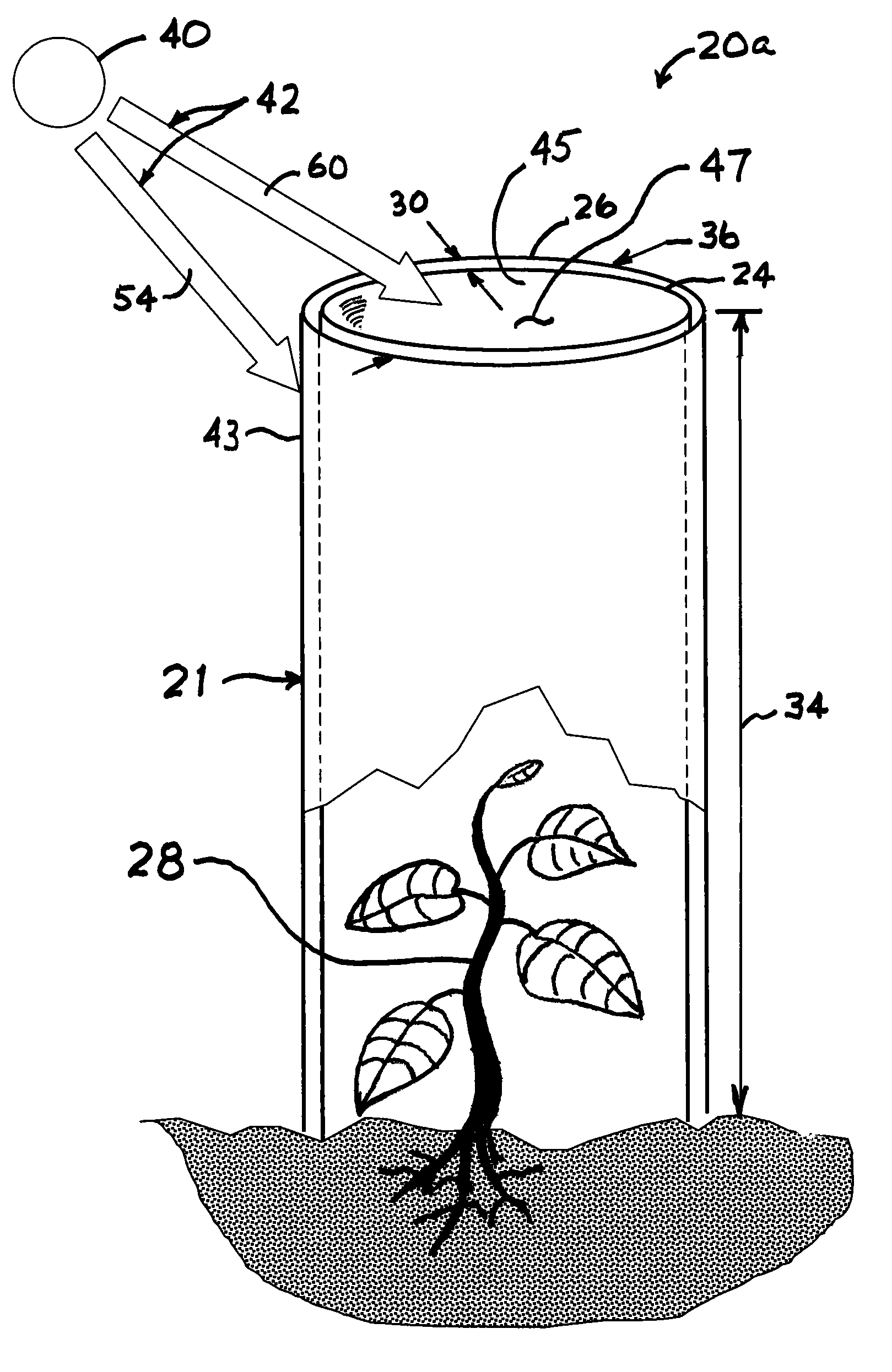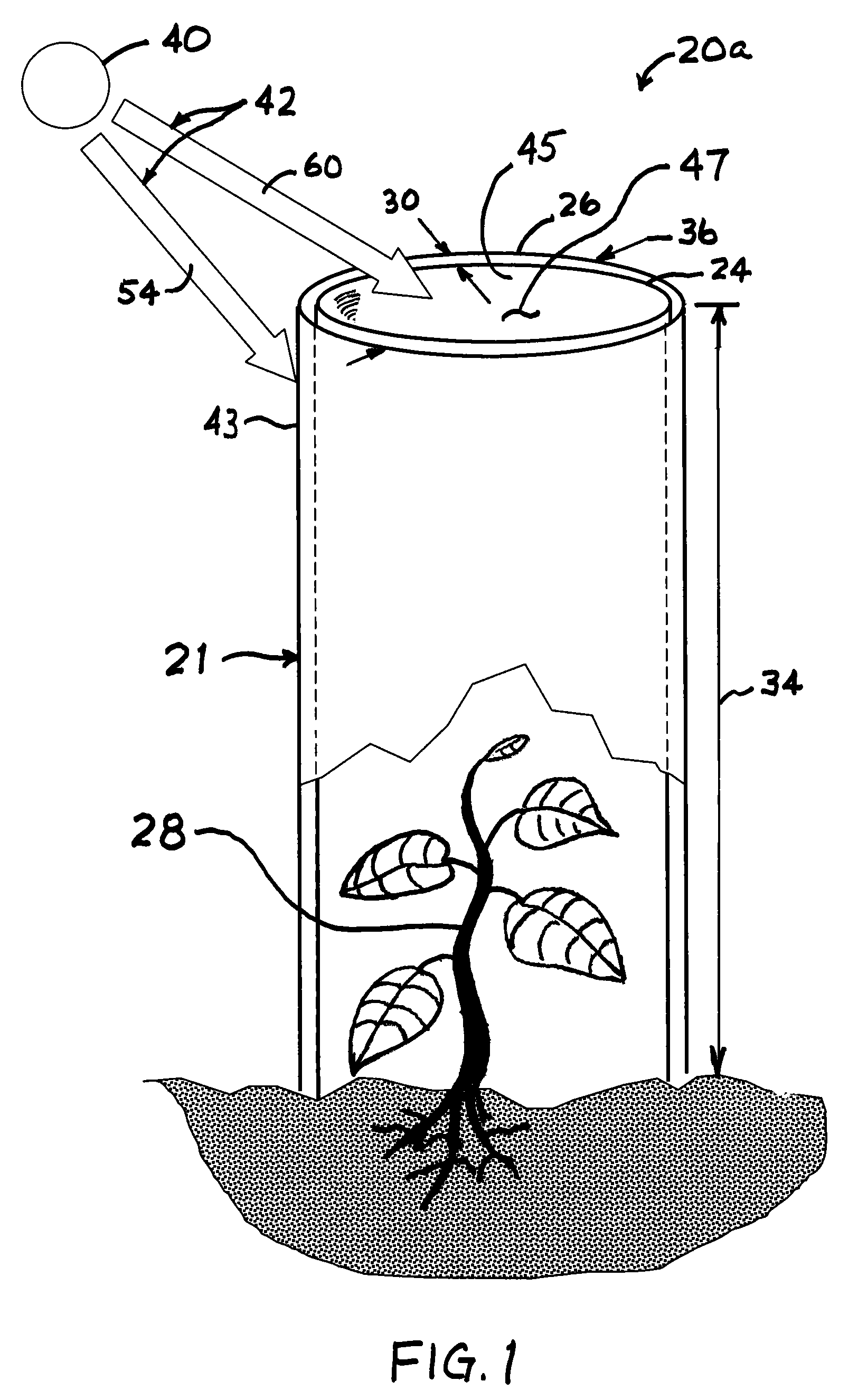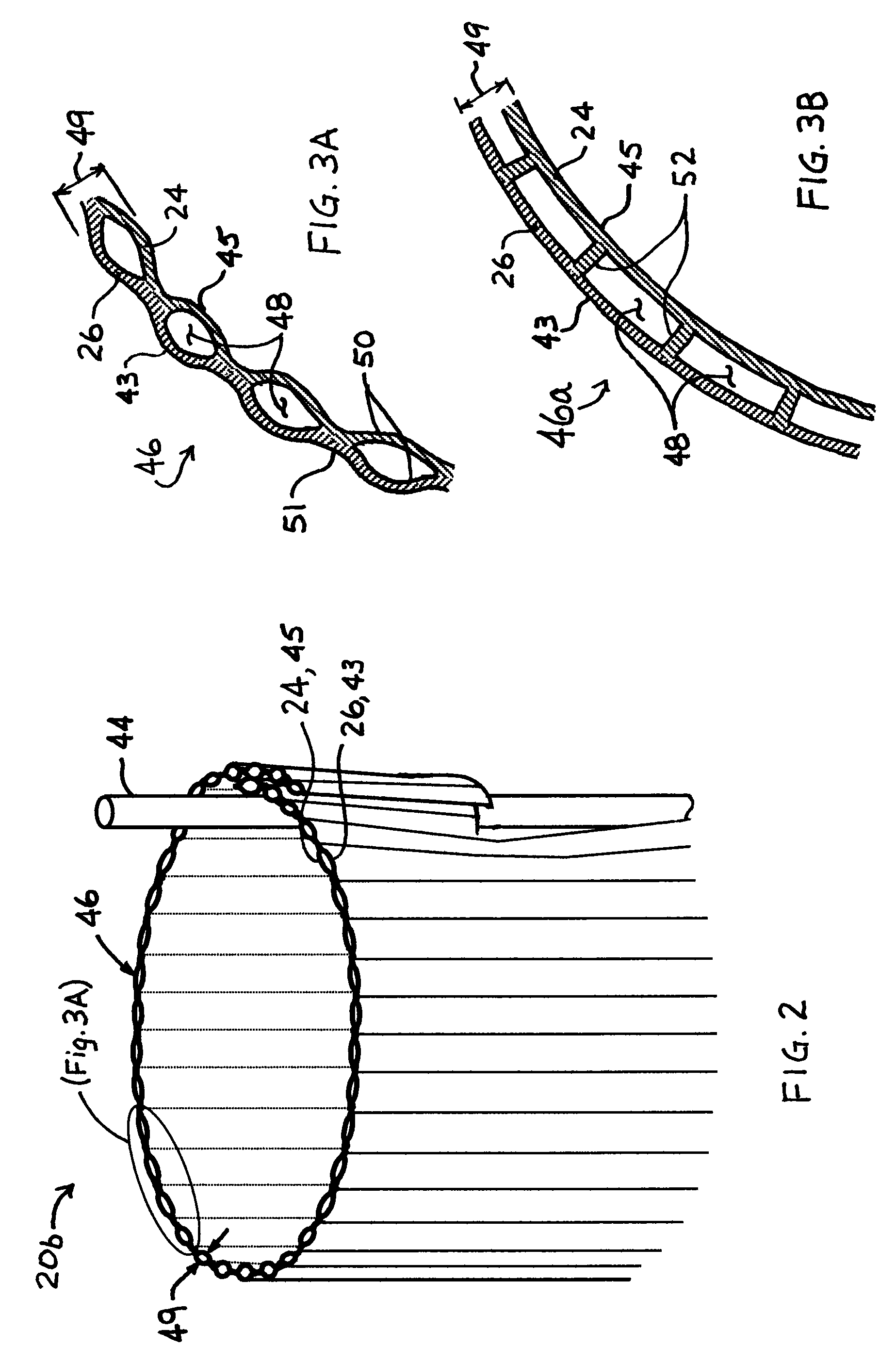Spectrally selective grow tube
a grow tube and selective technology, applied in the field of tree shelters and grow tubes, can solve the problems of low growth rate, easy damage to vines, and high mortality of shade-adapted trees, and achieve the effect of large growth rate and minimal aesthetic concerns
- Summary
- Abstract
- Description
- Claims
- Application Information
AI Technical Summary
Benefits of technology
Problems solved by technology
Method used
Image
Examples
Embodiment Construction
[0065]Referring to FIG. 1, a spectrally selective grow tube 20a having a dual wall configuration 21 is depicted in an embodiment of the invention. The spectrally selective grow tube 20a may include an interior member 24 and an exterior member 26 that surrounds a resident plant 28. The interior and exterior members 24, 26 may be separated by an annular gap 30, as depicted in FIG. 1. The spectrally selective grow tube 20a may be further characterized as having an overall height 34 and an overall diameter 36. The interior and exterior members 24 and 26 of FIG. 1 are depicted as being structural wall members (i.e. both the interior and exterior members 24 and 26 have appropriate thickness and mechanical properties to define a shape).
[0066]Alternatively, the spectrally selective grow tube 20a may be fabricated without an annular gap between the interior and exterior members 24 and 26 (i.e. annular gap 30 being substantially zero; see, e.g., FIG. 4). Such an embodiment may also comprise e...
PUM
 Login to View More
Login to View More Abstract
Description
Claims
Application Information
 Login to View More
Login to View More - R&D
- Intellectual Property
- Life Sciences
- Materials
- Tech Scout
- Unparalleled Data Quality
- Higher Quality Content
- 60% Fewer Hallucinations
Browse by: Latest US Patents, China's latest patents, Technical Efficacy Thesaurus, Application Domain, Technology Topic, Popular Technical Reports.
© 2025 PatSnap. All rights reserved.Legal|Privacy policy|Modern Slavery Act Transparency Statement|Sitemap|About US| Contact US: help@patsnap.com



